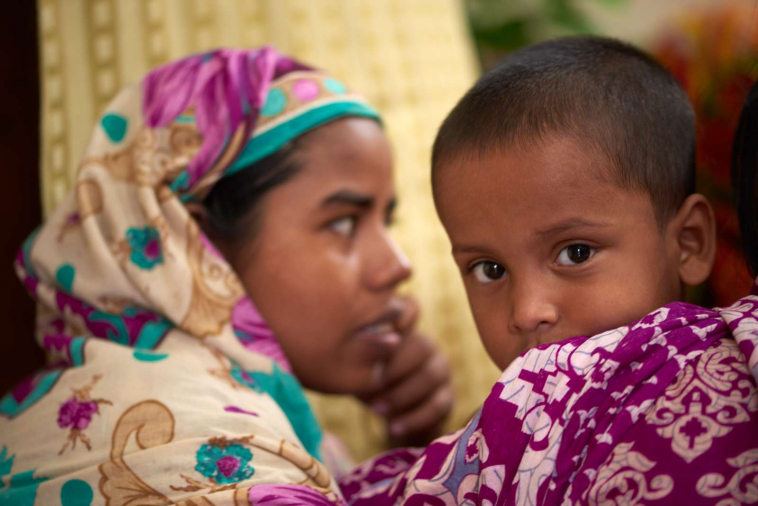World Diabetes Day: Part 2

Over 199 million women are living with diabetes; by 2040 it will be 313 million. Hyperglycemia – dangerously high blood sugar – is one of the most common medical conditions seen during pregnancy, with an estimated one in seven cases brought on by gestation.
Alongside the cause is the effect: risk for the mother, the baby, and the self-perpetuating cycle of rising rates for future generations.
This World Diabetes Day, FIGO reaffirms our call for greater attention to the link between maternal health and non-communicable diseases in the Sustainable Developmental Goals (SDG) agenda: in particular, to gestational hyperglycemia and its propensity to fuel the global diabetes, obesity and cardiovascular disease pandemic.
This year’s theme is ‘Diabetes and the Family’. We spoke to Dr Anil Kapur, Chair of the Board of the World Diabetes Foundation about the science, the impact - and why he is optimistic that pregnancy is a powerful moment for taking on the NDC pandemic.
Part 2 below; click here for Part 1:
Why are you passionate about gestational diabetes?
Without proper guidance and knowledge, the condition adds a deep sense of stress, anxiety, worry and fear; this can be quite counterproductive. But if the team providing care is equipped well with counselling skills, they can help to overcome the anxiety and stress - and even use the opportunity to improve eating and lifestyle behaviour.
Pregnancy and childbirth are important teachable moments for behaviour change, and by testing for GDM during pregnancy we can identify women at very great risk of future diabetes and heart disease. By applying health promotion and preventive strategies, and forewarning them of their risk, we can prevent or delay the onset of these life-limiting conditions.
When women understand the importance of behaviour change it will positively impact the whole family, particularly their children - and thus the health of the subsequent generation.
Are there any warning signs that pregnant women and their family members should be alert for?
Reproductive age women already known to have diabetes should carefully plan their pregnancy so as to ensure that they are in good health, and that their diabetes is well controlled before conceiving. Poor control during conception and early pregnancy can result in congenital malformations and miscarriage.
It is rare to have women with GDM manifesting classical signs of diabetes, and all women should be tested. But the risk is higher in older women, in women who are overweight or obese, who have a family history of diabetes or past bad obstetric history.
What does this mean in the era of rising NCDs?
While there are several factors responsible for the global pandemic of NCDs, one essential element that continues to receive scant attention is the fetal environment and its role as a determinant of population health. The parents’ health, and mother's peri-conceptional and gestational health can determine whether one starts life with a health ‘advantage’ or ‘handicap,’ and it is on this chance foundation that NCD risk factors play out in later life.
Of the 130 million pregnancies resulting in live births globally every year, an estimated 21 million are impacted by hyperglycemia, 7-8 million by hypertension, 42 million by maternal overweight and obesity, 26 million by maternal undernutrition and 56 million by maternal anemia.
People starting life with a ‘health handicap’ may be less able to withstand lifestyle risks. They may be more vulnerable to developing disease early compared to those starting with a ‘health advantage’.
From my perspective, there cannot be a better or more efficient way of addressing the global rise of diabetes and NCDs than by bringing attention to maternal health via hyperglycemia in pregnancy. Any efforts on NCD prevention and control must therefore begin with and substantially focus on preconception and maternal health.
What change do we need to see at the international level?
FIGO, the World Diabetes Foundation and many other organizations stand united in our position that maternal and child health is inextricably linked with NCDs. Unaddressed, we face a significant and growing global public health challenge, including burden of obesity, type 2 diabetes and cardio metabolic disorders. Since pregnancy offers a unique opportunity to integrate maternal and child health services with health promotion and NCD prevention - a bridge to create more integrated services at the primary care level – any efforts on NCD prevention and control must begin with and substantially focus on preconception and maternal health.
Together we can lower maternal and newborn morbidity and mortality, reduce the risk of future diabetes in women with GDM, and break the chain of developmental programming to reduce the rates of diabetes in the future generations.